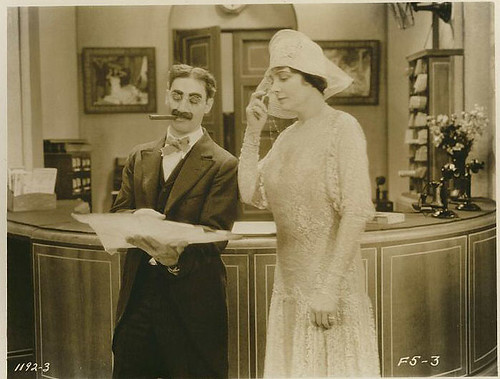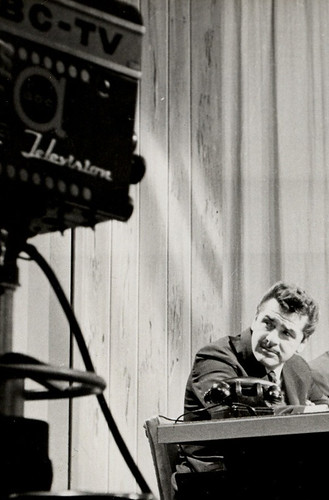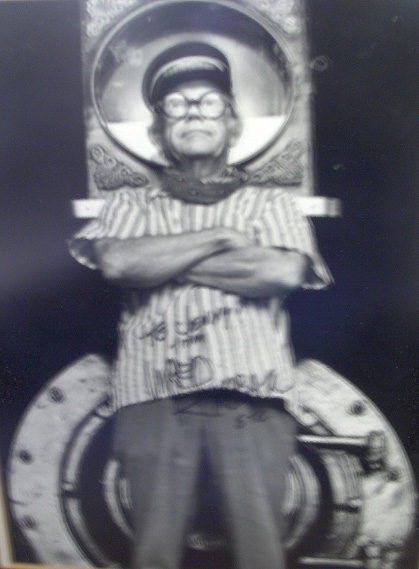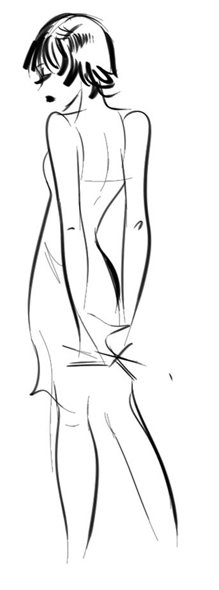
Groucho and Margaret Dumont, his greatest straight man; from my big fat collection of original marx stills
Here's an original photograph from the first Marx Bros film, "The Cocoanuts", circa 1929[for sticklers, no, I won't count their lost silent "Humor Risk").
"Cocoanuts" had been a hit live show on Broadway and on the road for the Marxes so it was a natural project for their first sound film. They shot in New York's Astoria studio while simultaneously appearing on Broadway in the show that would become their second film, "Animal Crackers". By our standards--indeed by the standards of the mid-1930s--it's a crudely-shot and recorded film, more a record of the stage show than anything remotely filmic. Here Groucho's holding an important real estate map for Margaret Dumont's perusal. One detail that gives you an idea of the problems they had with very early sound recording: the paper Groucho holds here is damp, as in wet.
All the paper in the film--and there's plenty of it in many scenes--had to be soaked in water before filming as the crackling of the dry paper sounded like exploding conflakes run amok on the soundtrack. This eliminated the grating sound but made for very odd-looking documents. Watching Groucho doing his routine with Chico, trying to unfold a sopping map the size of 24-field paper...well, that's something. He manages it, though--of course. Did anything ever nonpluss Groucho? I actually crossed paths with The great man at my dentist's office, of all places, when I was a kid. I was in abject awe of him, even though he was then very, very old and fairly doddering, with his beret dwarfing his head.
I'm posting on this somewhat atypical topic because this photograph was handy this morning--and also because I believe the Marx brothers--eldest Chico("the Italian"), mute Harpo, cynic Groucho and baby brother Zeppo were and will always be one of the most brilliant, unique and inventive bunch of ex-vaudevillians ever to grace the medium of film. They occupy that rare niche that is inimitability: not to be copied. Their comedic stew is as fresh today as it was in the 1920s--an unbelievable achievment. It's rare that human beings exist that can't be caricatured in animation directly, so extreme are they already; the Marxes qualify. That said, their great films--the 5 they made at Paramount, and the 2 best of their MGM period--are fertile fields for any animation story person--any animation artist--to watch and learn from, even if nothing they do can be applied exactly as is. One comes away from watching their films with an exhilirating sense of freedom and fun. They are a tonic for anything that ails ya.
Obviously I'm a fan. If you haven't given them a try, though--start with, say, "Monkey Business", or "Duck Soup". Or "Horsefeathers". Well, any of them.
There's brilliant movement, dialogue, gags. Just a suggestion.












